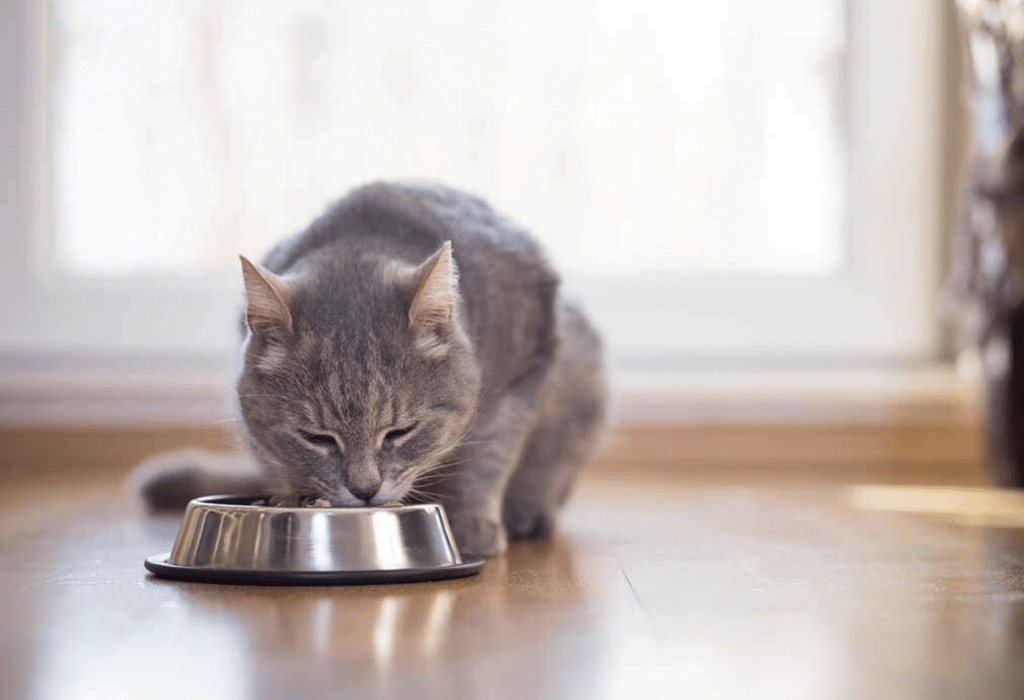As a cat owner, you want your feline friend to be happy and healthy, and one of the most important factors that contribute to their well-being is their feeding schedule. A proper feeding schedule can help ensure that your cat is receiving the right amount of nutrients and is maintaining a healthy weight. In this blog post, we will discuss the benefits of a feeding schedule for cats, how to choose the best feeding schedule, and the best practices for feeding your cat.
Benefits of a Proper Feeding Schedule for Cats
A feeding schedule for cats has several benefits that contribute to their overall health and well-being. Here are some of the key benefits of establishing a proper feeding schedule for your feline friend.
Helps Maintain A Healthy Weight
Feeding your cat on a consistent schedule can help you control their portions, which is essential to maintaining a healthy weight. Overfeeding can lead to obesity and health problems such as diabetes, while underfeeding can cause malnourishment and weakness. Establishing a consistent feeding schedule can help you control the amount of food your cat is consuming, making it easier to maintain a healthy weight.
Promotes Healthy Digestion
Regular feeding times can help promote healthy digestion in cats. When cats eat on a consistent schedule, it helps regulate their digestive system, making it easier for them to process and absorb nutrients from their food. Additionally, maintaining a consistent feeding schedule can help reduce the risk of digestive issues such as vomiting, diarrhea, and constipation.
Reduces Stress And Anxiety
Cats thrive on routine, and establishing a consistent feeding schedule can help reduce stress and anxiety. When cats know when they will be fed, it helps them feel more secure and less anxious. Additionally, feeding your cat on a consistent schedule can help prevent them from becoming too hungry, which can lead to aggressive behavior.
Choosing the Right Feeding Schedule for Your Cat
There are two main types of feeding schedules for cats: free feeding and scheduled feeding. Here are the pros and cons of each feeding method and tips for choosing the best feeding schedule for your cat.
Free Feeding Vs. Scheduled Feeding
Free feeding, also known as ad libitum feeding, is when you leave food out for your cat to eat whenever they want. Scheduled feeding is when you feed your cat at specific times throughout the day. There are pros and cons to both feeding methods.
Free Feeding
- Pros – Allows your cat to eat whenever they want, which can be convenient for busy pet owners. Also helpful for cats who have trouble regulating their appetite.
- Cons – This can lead to overeating and obesity, as cats may eat more than they need. Also, difficult to monitor how much your cat is eating.
Scheduled Feeding
- Pros – Enables you to control the portions your cat is consuming, making it easier to maintain a healthy weight. Also, can help regulate your cat’s digestive system and reduce the risk of digestive issues.
- Cons – Can be less convenient for busy pet owners, and cats may become anxious if they do not receive food when they expect it.
Frequency of Feedings
The frequency of feedings will depend on your cat’s age and health. Here are some general guidelines for how often to feed your cat:
- Kittens (under 6 months): Should be fed 3-4 times per day.
- Adult cats (6 months to 7 years): Should be fed 2-3 times per day.
- Senior cats (7 years and older): Should be fed 2 times per day.
It’s important to follow the feeding guidelines on the cat food label and adjust the amount of food based on your cat’s weight and activity level.
Best Practices for Feeding Your Cat
In addition to establishing a proper feeding schedule, there are several best practices to follow when feeding your cat. Here are some tips for feeding your cat to ensure they receive the proper nutrition and maintains a healthy weight.
Portion control
Portion control is essential to maintaining a healthy weight for your cat. Use a measuring cup to ensure that you are giving your cat the correct amount of food at each meal. It’s important to weigh your cat regularly to ensure that they are maintaining a healthy weight. If your cat is overweight, talk to your veterinarian about a weight loss plan.
Choosing the right food
Choosing the right food for your cat is also essential to maintaining its health. Look for high-quality cat food that contains all the necessary nutrients for your cat’s age and health. Avoid foods with fillers like corn, wheat, or soy, which provide little nutritional value and can cause digestive issues.
Hydration
Water is essential for your cat’s health, and it’s important to ensure that your cat has access to clean and fresh water at all times. Consider feeding your cat wet food to provide additional hydration. If your cat is not drinking enough water, try adding water to their food or using a pet fountain to encourage them to drink more.
Establishing the best feeding schedule for cats is essential to maintaining their health and well-being. A consistent feeding schedule can help control portions, promote healthy digestion, reduce stress and anxiety, and ensure that your cat receives the proper nutrition.
Choosing the right feeding schedule for your cat will depend on its age, health, and lifestyle. By following best practices for feeding your cat, you can help ensure that they receive the best possible nutrition and live a long, healthy life.
